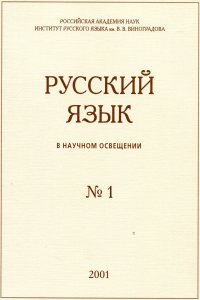Subordination in nonstandard contexts: nonstandard subordinate constructions and their syntactic properties
Abstract:
The article focuses on nonstandard subordinate constructions like I know what my father thinks — I should learn to cook. In these context, the second clause semantically fills a valency slot of some head (in this case, the verb thinks), but its syntactic properties are not canonically subordinate. This happens when the form of the clause does not correspond to the argument structure of the head, when the subordinate clause is not in the same clause as the alleged head and/or if the second clause does not contain any subordination markers. In the article, it is demonstrated that, though the constructions under analysis differ in their functions and internal organization, they have many common features that distinguish them from standard subordinate constructions. For instance, many of them occur in several variants, some of which are closer to standard subordination and some are distinct from it. Besides this, the precise properties of the constructions depend on semantic and discourse parameters: for example, whether the subject is co-referent to the speaker and whether deictic interpretation is possible. Importantly, some fundamental differences between nonstandard and standard subordinate constructions (such as almost entire impossibility of negation and of subject omission in the second clause) are not reducible to the functions and properties of one individual construction. We rather deal with a general tendency: in the absence of subordinate markers the communicative status of the second part increases and it tends to become a separate assertion. At the same time, there are some differences between constructions: for example, only some of them allow relative tense interpretation. These differences show that some syntactic properties depend on the strength of syntactic link between the two clauses, which is different for each of constructions.


